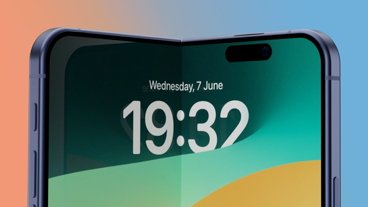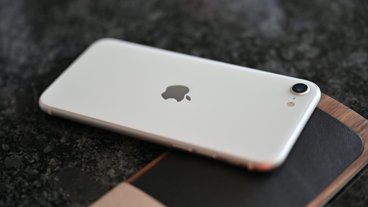Echoing claims of an early 2010 launch of the 10-inch device first reported by AppleInsider last July, the financial paper cited "people briefed on the matter" as saying that Apple has been experimenting with "two different material finishes" for the hardware.
Those with knowledge of the situation were unable to confirm to the paper whether that meant that the electronics maker is planning two distinct versions of the tablet, or if it's simply testing two different surface materials. It said the device will have a 10- to 11-inch touchscreen and will go on sale in March.
A report from last month indicated that the Cupertino-based company had been seeking solutions to strengthen the glass of the 10-inch tablet displays it outsourced, a move which allegedly contributed to delaying the product's launch until this month.
It's unclear whether the two reports are related to the same matter.
Nevertheless, the Journal believes the Apple tablet will serve as a "multimedia device that will let people watch movies and television shows, play games, surf the Internet and read electronic books and newspapers."
The paper also cited people briefed on the matter who say Apple "believes it could redefine the way consumers interact with a variety of content."
"Textbooks and newspapers, for example, could be presented differently through color screens, a touch interface, and the integration of live up-to-the-minute information from multiple sources," the report says.
Analysts expect Apple to charge less than $1,000 for the device when it does surface. In a report released last week, Piper Jaffray analyst Gene Munster said he expects the average cost of the product to fall in the $600 range. He sees the company selling 1.4 million of the devices in its first 9 months on the market. Munster also predicted the device will debut by March.
On Monday, reputable sources reported that Apple plans to hold an event on Wednesday, Jan. 27th at the Yerba Buena Center for the Arts in San Francisco. In addition to the tablet, the media event could give way to version 4.0 of the iPhone Software Developers kit, which may include the tools developers would need to build apps for the larger-screened device.
 AppleInsider Staff
AppleInsider Staff






-m.jpg)






 Wesley Hilliard
Wesley Hilliard
 Malcolm Owen
Malcolm Owen
 Andrew Orr
Andrew Orr
 William Gallagher
William Gallagher
 Sponsored Content
Sponsored Content
 Christine McKee
Christine McKee

 Thomas Sibilly
Thomas Sibilly







89 Comments
Why all the secrecy on a product... then unveil it and not have it ship for 2 months?
Is it to test the market reaction before assembling them?
Get some hype going?
Give the competition 2 months to copy it, thereby rushing it to market and sucking so that the iSlate stands above?
Why all the secrecy on a product... then unveil it and not have it ship for 2 months?
Is it to test the market reaction before assembling them?
Get some hype going?
Give the competition 2 months to copy it, thereby rushing it to market and sucking so that the iSlate stands above?
The secrecy is because it's endemic at Apple and always has been. it's their policy to be that way.
Given that it took three years for the competition to copy the iPhone (or even get close), I think the two month lead on the tablet shouldn't matter that much.
Why all the secrecy on a product... then unveil it and not have it ship for 2 months?
Is it to test the market reaction before assembling them?
Get some hype going?
Give the competition 2 months to copy it, thereby rushing it to market and sucking so that the iSlate stands above?
You don't just copy something like that in 2 months. Maybe 2 years. Just look at the iPhone. It was previewed in January and didn't ship until June.
The suspense and secrecy also plays with people's minds. Who, in their right mind, is going to buy anything else until they know what Apple's device really is and what it brings to the table. Apple is often criticized for their secrecy but it is absolutely brilliant marketing and no one does it like Apple. For them it's an art form.
Oh, and it absolutely infuriates the Windows fanboys. This alone makes it worth the criticism.
...with a $300 device - just as they followed the iPhone several years later with the budget Genio phones, which have been a massive hit with the tween crowd here in the UK.